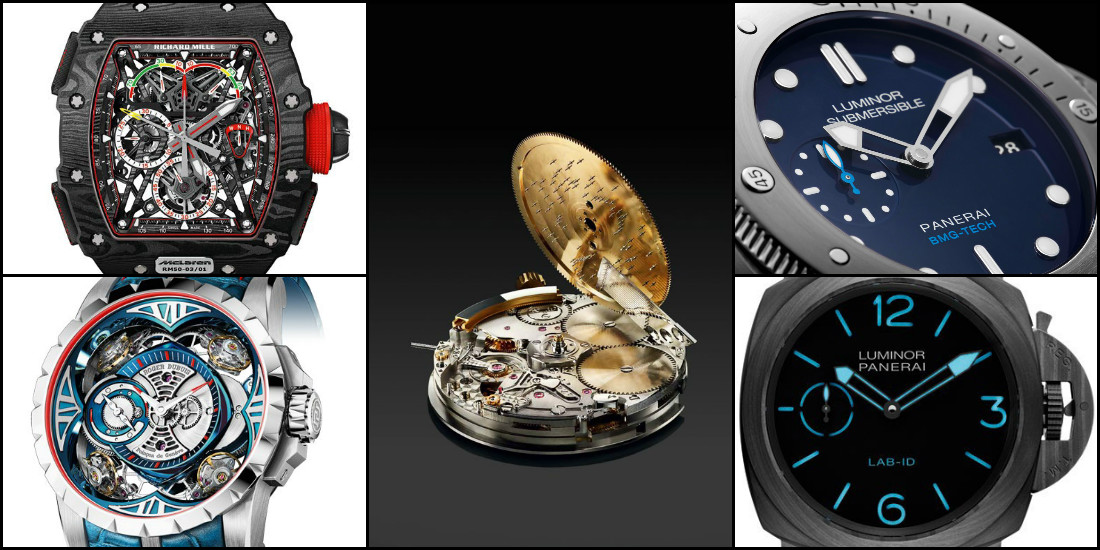
State-of-the-art materials continue their conquest of the watch industry. The lighter, harder and self-lubricating metals and ceramics of the future are already here.
The term “metallic glass” conjures up the image of a transparent and brittle type of glass. In this instance “metallic” is the more significant part of the name. This is a type of alloy in which the main ingredient when it comes to watch industry applications is zirconium, also a metal. What distinguishes these alloys is their structure that is amorphous (like glass, hence the name). The atoms composing them are not organized, but instead disordered, thereby endowing them with deformable, shock-absorbent and unbreakable properties that are particularly precious in watchmaking. The case of the Panerai Luminor Submersible 1950 BMG-TECHTM 3 Days Automatic – 47mm is entirely composed of this Bulk Metallic Glass (BMG) alloy containing zirconium, aluminum, titanium, copper and nickel. It is stainless, abrasion-resistant and virtually impervious to magnetism. There are dozens of metallic glass variants, all very complex in terms of their composition. Breguet uses a disk composed of this material in its Musicale model, vibrating within this music-box watch that is triggered at a set time.
FREE FROM LUBRICANTS
Another major innovation, by Panerai, the LAB-IDTM Luminor 1950 CarbotechTM 3 Days – 49mm, is equipped with a movement made from tantalum carbide, a ceramic in which carbon serves as a solid lubricant. The gear-train pivots turn without friction. Teamed with an escapement made of silicon and synthetic diamond (carbon strikes again), it enables Caliber P.3001/C to do entirely without any liquid lubricant – to the point where, based on a tried and tested movement structure, the watch is guaranteed for a cool 50 years !
FREE FROM SCRATCHES
Roger Dubuis enjoys exclusive watch industry use of cobalt chrome, an alloy produced using the extremely rare Micro-Melt® technology and typically used for Formula 1 racing car exhaust pipes due to its exceptional shock- and corrosion-resistance. Another advantage is its excellent capacity to reflect light, thereby giving it an extremely luminous appearance. Its highly complex manufacturing process involves melting and pulverizing the metal by a high-pressure stream of gas in order to create a fine powder composed of micro-particles with an extremely homogeneous diameter. They are then re-melted to achieve maximum density by eliminating the micro-spaces between the atoms, thereby endowing the alloy with its various resistance properties.
FREE FROM EXCESSIVE WEIGHT
Carbon is the fundamental atom of the living world, so it is quite logically polymorphous, like living beings. It was discovered in the form of graphene by two researchers from the University of Manchester, earning them the Nobel Prize for Physics. Richard Mille uses it in its new RM 50-03 via its new partner McLaren. A major consumer of ultra high-performance composites, the car manufacturer contributed to impregnating 600 layers of TPTTM carbon – a material already used by Richard Mille in conjunction with its North Thin Ply Technology partner – with supercharged resin containing graphene, to form the bezel and caseback. The result is Graph TPTTM, a nanomaterial six times lighter than steel yet 200 times more resistant. This split-seconds tourbillon chronograph has a 7-gram movement within an overall 40-gram watch. Once again, materials innovation delivers tangible benefits on the wrist.






